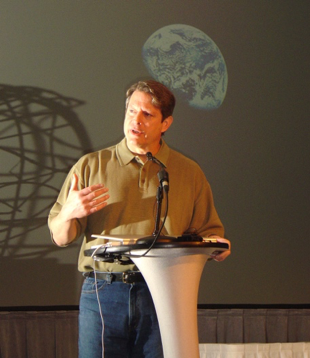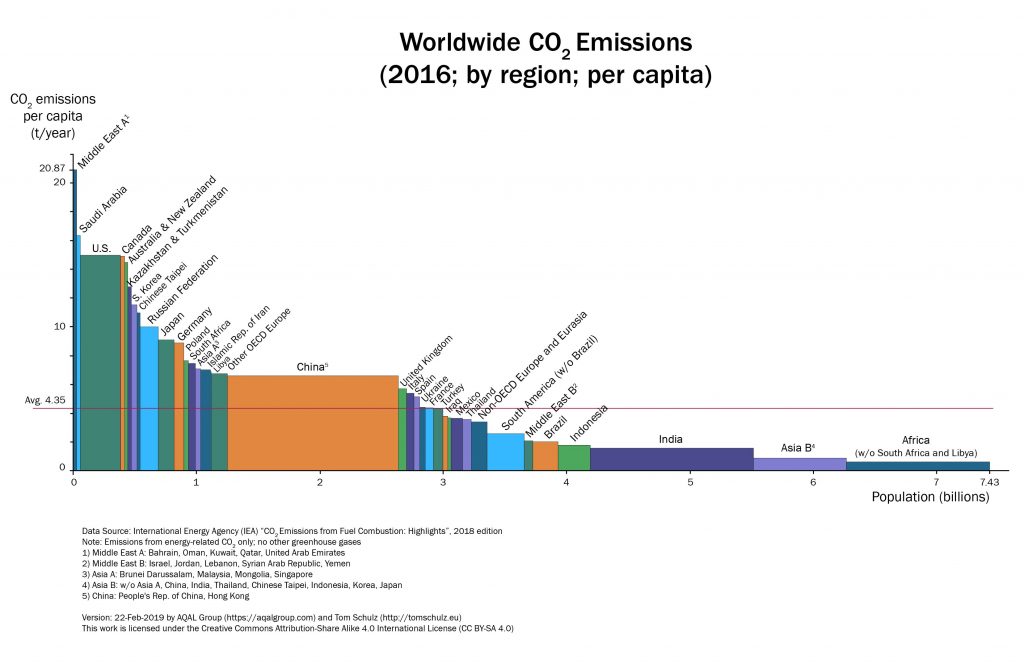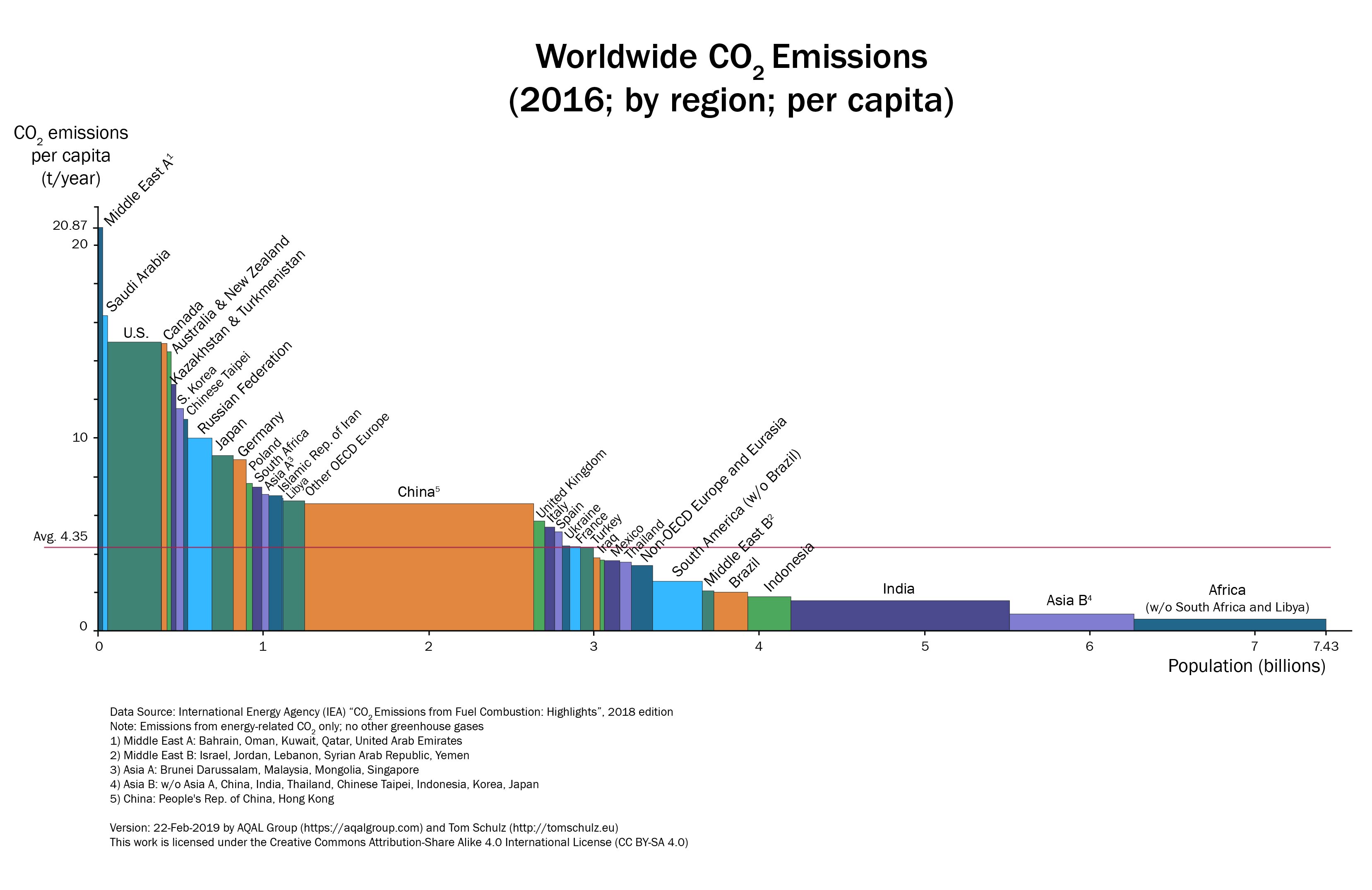There is an updated version of the diagram available here (2019 data, released by IEA 2021)
The current warnings about climate change are not new, they just keep accelerating. One of the first and the most remarkable forewarning came through the groundbreaking report to the Club of Rome entitled The Limits to Growth[1]. It was published in 1972, sold more than 9 million copies and put climate crisis on the world agenda because of its shocking wake-up call.
An eye-opening report
The report alerted the public about a potentially disastrous earth trajectory that could be caused by ongoing resource depletion, uncontrolled population growth, and raising carbon footprint with dire environmental consequences and massive social implications if business as usual were to be continued. Unfortunately, few people including William Nordhaus[2], now the 2018 Nobel Prize laureate in economics, have truly accepted, taken to heart, or let alone act upon the recommendations of the report with dire consequences as we now know.
I, Mariana, first learned about the report and was shocked by it while still in high school in 1977 when looking at some of the 12 potential future development scenarios. The four MIT researchers who wrote the report modelled these scenarios using Jay Forrester’s World3 System Dynamics, a computer simulation of physical growth including interactions between population growth, industrial growth, food production and ecological limits on a finite planet.
In The Limits to Growth report, these scenarios showed which options the global society could take between 1970 and 2100. Some of the scenarios were optimistic and indicated where the potential collapse could be averted through deliberate reduction in earth population as well as systematic CO2 reduction in the footprint per person. Other scenarios were pessimistic and simulated the pollution crises representing the things that could, and as we now know, did go wrong due to resource depletion, excessive pollution, and increased decline of well-being through population explosion, growing human footprint, and resource scarcity.
Although the report did not predict which one of the 12 scenarios was most likely to happen, it did encourage sustainable development within planetary boundaries and was perceived as unnecessarily alarmist. Consequently, it was heavily criticized[3] by some economic growth addicts[4] and considered a “mess” by others,[5] because, in their mind, something that must not happen will not happen. Their arguments emphasize, however, the ever-present tension, between the now present climate emergency and the “crucial roles played by exploration and discovery, technological progress, and substitution.”[6]
Meeting Al Gore
Our own journey toward climate emergency action started in 2003 at the Alliance for a New Humanity conference in Puerto Rico that we co-sponsored.

The keynote speaker was Vice President Al Gore and for several days, we had the opportunity to discuss in depth his concerns about climate change, how he was desperately trying to get important countries including Russia and the USA to ratify the Kyoto Protocol[7], and what we could all do to support the effort.

It was then and there, when it became obvious to us that we had to redirect all of our investments, resources, focus, and activities toward averting human-caused climate change as the biggest threat to earth and humanity in recent history. The following Academy Awards conferred in 2006 to Al Gore’s documentary An Inconvenient Truth[8] put climate change center stage also in the public eye emphasizing that we do not have any time left and needed to act right away. Like The Limits to Growth book in 1972, the movie was heavily criticized, considered as exaggerated, gloomy, and disempowering. The subsequent 2007 Nobel Peace Prize[9] award conferred in two equal parts to the Intergovernmental Panel on Climate Change (IPCC)[10] and Al Gore for their research and the dissemination of knowledge about man-made climate change was yet another wake-up call. But business continues as usual with little significant action by regulators, governments, or industry.
A clear look on CO2 emissions
The result: global CO2 emissions continue to rise unimpededly to worrisome levels and Figure 1 shows why the negotiations about reducing CO2 emission between nations are so difficult. Shedding some light on the issue will help understand where transformation could occur.

(© 2019 Tom Schulz, AQAL Capital; CC BY-SA 4.0)
Every year, the International Energy Agency (IEA) publishes its statistics on the worldwide CO2 emissions to make it visible and clear why the global community must reduce the total amount of CO2 that is added to the atmosphere.[12] The question is: who should do the reducing?
First, the CO2 emissions are a global challenge for they do not halt at the country border where they are emitted. Second, there is no world government that could take such a decision on behalf of the planet and so we depend on each national government to decide to do the right thing and act in the name of mother Earth. To see the source of destruction clearly, Tom Schulz developed the variwide chart[11] shown in Figure 1. The total CO2 emissions of a region is represented through a rectangular area. The height of each rectangle is proportional to the CO2 emissions per capita and the width is proportional to the population of the represented region. The regions are sorted by CO2 emissions per capita, from the highest to the lowest. The data comes from the International Energy Agency[12], was published in 2018 and shows the 2016 status. It becomes obvious that emissions vary widely from one country to the next with 30.8 t per capita in Qatar to 16.2 t per capita in the U.S., 6.6 t per capita in China, all the way down to Africa with 0.95 t per capita. The world average is 4.35 t per capita. Most industrialized nations range between 4 t and 15 t CO2 emissions per capita.
Urgent Climate Action
Through this chart, it becomes obvious that the earth would not be able to absorb additional CO2 emissions to make room for additional developing nations like India and continents like Africa to “catch up” by increasing their per capita emissions to the current average. Never mind that developed countries are to be made responsible for the current misery, the fate of the earth is currently decided by what occurs in China, India, Africa and other developing countries from now on. They must avoid building an economy based on fossil fuels at any cost and “leapfrog” to the use of renewable energy sources.
By skipping a fossil-based economy they would join those awakened souls and climate activists who continued to push the matter and achieved the Paris Agreement on Climate Change[13] and the adoption of Agenda 2030 with its Sustainable Development Goals in 2015.[14]
Nevertheless, the sense of urgency doesn’t seem to sink in fast enough and there is not enough commitment nor regulatory action taken to address the current climate emergency. Not only that but one of the world’s greatest polluters per capita, the United States (Figure 1), under the Trump administration even decided to withdraw from the Paris agreement[15] with Trump himself stating that “the concept of global warming was created by and for the Chinese in order to make the U.S. manufacturing non-competitive.”[16]
Moreover, without legislative incentives and proper measurement criteria, the private sector is moving too slowly toward a sustainable financial and economic system. The question is if and if yes, what can we as individual investors do to avert the worst within the 11 years window of opportunity given by Agenda 2030 and the Paris Agreement for Climate Change?
Will you join us?
On October 27th, 2017, together with the Co-presidents of the Club of Rome and more than one hundred investors we have invoked the Investment Turnaround to move fast and pave the way toward a livable future for all of us.
Read more on our website on how we engage in implementing the SDGs. Get an insight what the SDGs are in this 1 minute video and on the UN Website.
Find more information on how Transformation is Feasible, the current report by Club of Rome member and Limits to Growth author Jørgen Randers and Johan Rockström, Director of the Potsdam Institute for Climate Impact Research.
As an individual check out the Action Campaign and should you have your own business get insights here how to integrate the SDGs in your business. Feel free to contact us for more information or cooperation.
“We do need hope—of course, we do. But the one thing we need more than hope is action. Once we start to act, hope is everywhere.”
Greta Thunberg
[1] Meadows et al. (1972)
[2] https://peakoil.com/consumption/a-few-things-you-probably-didnt-know-about-william-nordhaus-winner-of-the-nobel-prize-in-economics
[3] Nordhaus W D (1973)
[4] Nordhaus W D (1992)
[5]https://krugman.blogs.nytimes.com/2008/04/22/limits-to-growth-and-related-stuff
[6] Nordhaus W D (1992, p.45)
[7] The Kyoto Protocol is an international accord thatextends the 1992 United Nations Framework Convention on Climate Change (UNFCCC) and through which nations commit to reduce greenhouse gas emissions, based on scientific consensus on climate change https://en.wikipedia.org/wiki/Kyoto_Protocol
[8] https://en.wikipedia.org/wiki/An_Inconvenient_Truth
[9] https://www.nobelprize.org/prizes/peace/2007/summary/
[10] IPCC Special Report on Global Warming of 1.5°C: https://ipcc.ch/sr15/
[11] A variwide chart, is a column chart whereby each column has a separate width to represent the third dimension in addition to the X and Y axes.
[12] International Energy Agency (IEA) “CO2 Emissions from Fuel Combustion: Highlights”, 2018 edition
Note: Emissions from energy-related CO2 only; no other greenhouse gases, no other sources/sinks; viewed March 5th, 2019 https://webstore.iea.org/co2-emissions-from-fuel-combustion-2018
[13] https://unfccc.int/process-and-meetings/the-paris-agreement/what-is-the-paris-agreement
[14] Transforming our world: The 2030 Agenda for Sustainable Development https://sustainabledevelopment.un.org/post2015/transformingourworld
[15] https://en.wikipedia.org/wiki/United_States_withdrawal_from_the_Paris_ Agreement#cite_note-1
[16] https://twitter.com/realdonaldtrump/status/265895292191248385?lang=en
